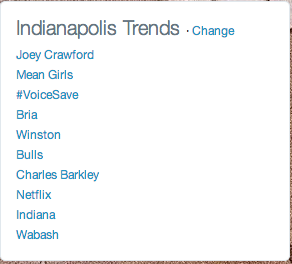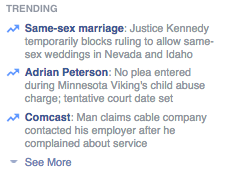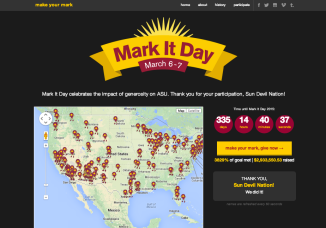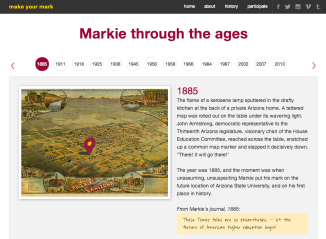57 percent of everyone who watches an online video produced by a nonprofit will go on to give to that nonprofit. (Google, 2013)
Keep that in mind, then go look at the number of views you have on some of your strongest Facebook or YouTube videos. And imagine 60 percent of those views becoming donors. Technically, that should be the case.
If only it were that easy …or maybe it is?
The following are three tips to build a video-driven content strategy that leads to your organization’s strongest ever end-of-calendar-year fundraising push.
Facebook Live – do it and do it often in December
Launch an end-of-year Facebook Live telethon. On New Year’s Eve or the week before, invite your best supporters who are also digitally active (your online ambassadors) to a special end-of-year party. Be sure there are plenty of food, drinks, and entertainment …and an experienced Facebook Live crew.

During this event, conduct several interviews with attendees and have them talk about why they gave back to your organization in the previous year and why they will continue giving in the new year. You might also interview a person or two who has been positively impacted by your mission. This could be a student, a patient, or a dog-in-waiting to be rescued …you get the idea.
To increase the audience for your Facebook Live, make sure everyone you’re interviewing shared the Facebook Live with their friends and family as soon as you go live.
And of course, throughout the Facebook Live event, be sure to frequently remind donors they “can give to support your mission by clicking ‘donate now’ in the Facebook post.
We call this the “modern Facebook pledge drive.” For more details on how to conduct a Facebook pledge drive, click here to watch our webinar.
Keep it simple for more video
You might have heard from various digital experts that lower quality, more authentic video is more effective for fundraising.
At least in some cases, that’s true.
According to Thankview, lower-quality, webcam-recorded videos are watched to completion 61 percent of the time, while higher-quality, uploaded videos are watched to completion only 47 percent of the time. More importantly, webcam-recorded videos lead to call-to-action clickthroughs on an email link 15 percent of the time, while uploaded videos only lead to CTA clickthroughs 10 percent of the time.
If you’re sending 10,000 emails, that’s an extra 500 people who go to your gift form from the lower-quality video.
That’s not to say high quality video doesn’t have it’s place. (Wait until you see what Groundwork is doing with virtual reality and major donors) But we should never avoid sharing videos with our donors, because we feel the quality is unbecoming of our mission. Can you see the video? Can you hear the video? If you answer “yes” to both and the message is on point, then share that video with your donors and prospects. Especially via year-end appeals. This approach will lead to more video messaging and, ultimately, more gifts.
Sell virtual seats to your holiday season gala
If you’ve experienced virtual reality, then you are aware of the medium’s transformative power. VR can place a person in a different time and space while giving them an emotional experience similar to being present (in the literal sense).
 Imagine using this technology to democratize your high-priced, end-of-year donor galas. Of course, nothing beats the real thing – actually being there – but for $50, a donor can experience the event virtually as opposed to paying $5,000 for a table. Access to watching the speakers, hearing the musicians, enjoying the celebrity keynotes… can all take place from the comfort of home and at a more approachable price point. This gives the annual fund donors unique access to high-end experiences without cheapening the experience for large gift donors, because the large gift donors still have the exclusive benefit of literally being there.
Imagine using this technology to democratize your high-priced, end-of-year donor galas. Of course, nothing beats the real thing – actually being there – but for $50, a donor can experience the event virtually as opposed to paying $5,000 for a table. Access to watching the speakers, hearing the musicians, enjoying the celebrity keynotes… can all take place from the comfort of home and at a more approachable price point. This gives the annual fund donors unique access to high-end experiences without cheapening the experience for large gift donors, because the large gift donors still have the exclusive benefit of literally being there.
This tactic could also be used as a leadership annual giving tool by moving the $50 up to $500. Especially if you’re concerned about cheapening the high-price live gala experience.
Using VR to widen the reach of a gala could be done through Facebook Live or could be recorded and edited for later use. For example, gift officers could carry VR headsets with them to donor visits and allow those who couldn’t attend in person to watch the next best thing.
Is your development operation ready to transform your fundraising outcomes with video? Groundwork Digital builds sophisticated digital strategies and produces award-winning videos for clients. Ask us about it by emailing me at justin@groundworkdigital.com or clicking here and completing our contact form.




 The campaign went viral with many thousands of Twitter users jumping in on the action. Periodically, a group of ambassadors and Epic Change members would insert tweets with a link to their fundraising page to build a school in Tanzania. Within a few short days, the group raised more than $10,000, had enough to build the school, and laid the groundwork for the Epic Change organization.
The campaign went viral with many thousands of Twitter users jumping in on the action. Periodically, a group of ambassadors and Epic Change members would insert tweets with a link to their fundraising page to build a school in Tanzania. Within a few short days, the group raised more than $10,000, had enough to build the school, and laid the groundwork for the Epic Change organization.




 Similar is true of timing your posts. During the University of California Santa Barbara’s
Similar is true of timing your posts. During the University of California Santa Barbara’s 
















































